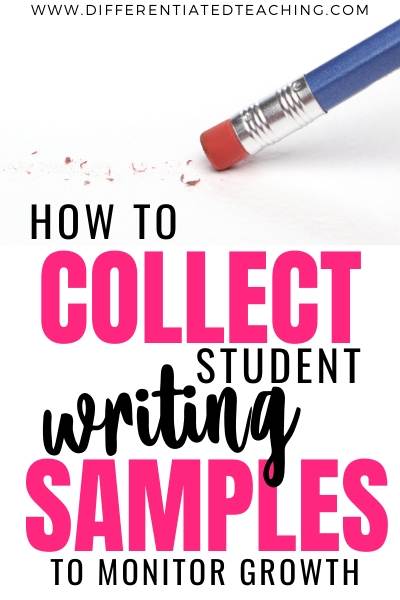How to collect writing samples that represent your students’ abilities
When you are trying to build student portfolios that help you differentiate instruction and assess students’ writing, it can seem like a daunting task to collect writing samples that represent your students’ abilities and accurately show growth across time.
How do you balance quantity with quality? How do you decide how much is enough?
How do you ensure you’re collecting samples that will be useful when it comes time to write your own lesson plans?
Most importantly, how do you collect writing samples that are comparable without making the writing process incredibly boring?
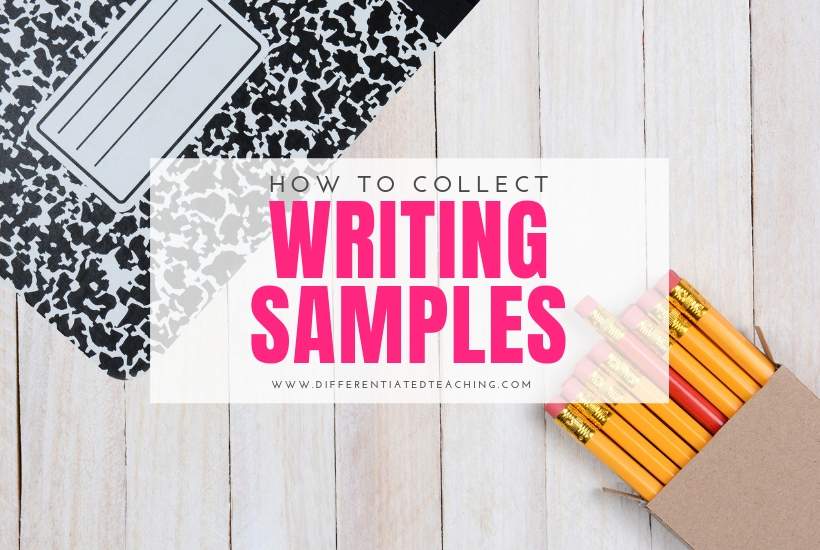
Each year I collect samples of my student’s writing to monitor growth across time. However, last year I realized the samples were not always a great comparison because they didn’t cover similar topics/events.
My solution was to collect three comparable writing samples. One at the beginning of the year, one mid-year, and one right after spring break.
Each sample focused on a personal narrative of what the students did on their break, and we created a final draft version of each as a craftivity that I could use to create a bulletin board. This allowed me to keep the rough draft to show what students were independently able to do.
They were all written on similar paper, and it allowed parents to see growth across the year. It also gave me something concrete and easy to interpret. This was perfect because they could be easily brought as work samples to problem-solving (RtI) meetings when I had concerns about a student’s progress in writing.
Keep reading find out more about the process I used to keep these formative assessments fun for students and how I used them to help me monitor student progress.
How to collect a beginning of year writing sample
During the first week of school, we read the story How I Spent My Summer Vacation by Mark Teague (affiliate link).
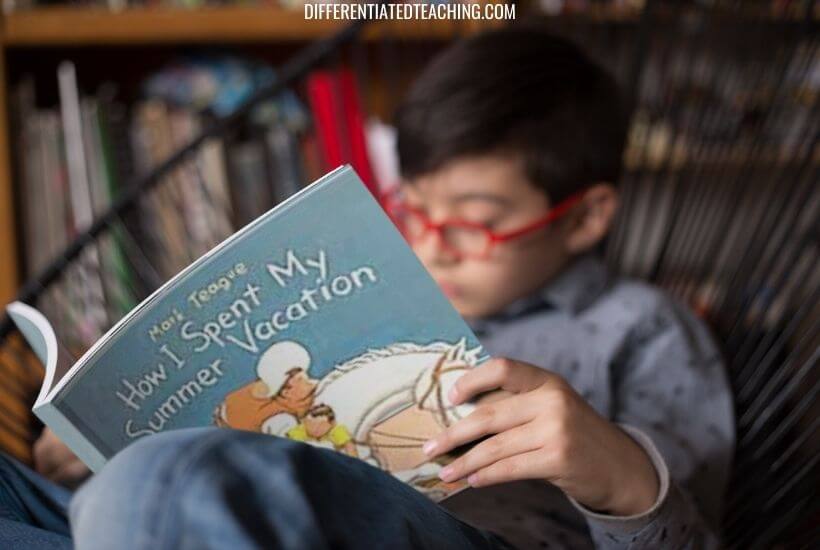
We discuss what clues the author gives us to see if the main character’s story is true or not. I also introduce exaggeration as a vocabulary word at this point. This helps lead us into our writing. As a side note, here is a YouTube video of the story, which makes a great addition if it is a rainy day recess.
Since there are always one or two (or 5 or 10) who have trouble thinking of an idea at the beginning of the year, I tell students they can write a story about what they really did on their vacation, or they can exaggerate to make the story more interesting.
We brainstorm some things they might write about, and I let them work through their draft. The goal for this writing isn’t to make it a long writing sample. I really just want to get a flavor of their writing style, current strengths and needs, and their understanding of the genre.
Here’s what I typically find with the beginning of the year stories:
- Grammar, punctuation, and editing skills vary greatly.
- Nearly all students struggle to focus on a specific moment and provide sensory details.
- Lots of “list stories” – stories that cover the entire summer that read more like a to do list
After we draft, we do some revisions together and students end up making a cute ice cream cone craft to display their final writing. This makes a great beginning of year bulletin board display for the classroom.
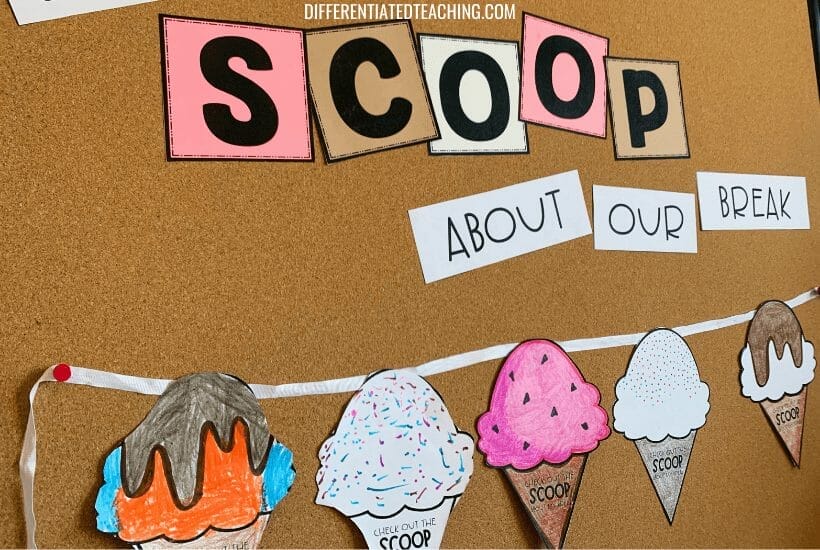
Interested in this activity? Find it here: Summer Break Writing Craft
Collecting your mid-year writing sample
While I do not read the story again, I collect a similar writing sample in January when students come back from break. By this point we have covered the topic of seed stories extensively. The students write a personal narrative on what they did over their winter break, and there tend to be quite a few improvements overall.
We work through the brainstorming portion together, much like we did at the beginning of the year. Once students have their idea ready and outlined, they are given their draft paper and allowed to begin writing. This draft is what I collect for their portfolio.
I try to keep this fun and we complete our final versions as a craft that I can use as a bulletin board display. This time the craft is a snow globe.
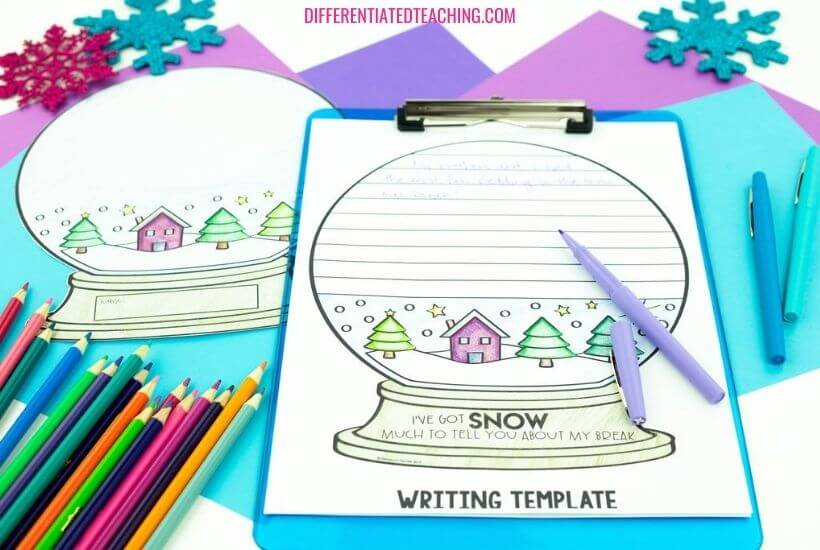
Collecting your end of year writing sample
We do a final sample after our last break of the year – this is usually one of our must-do activities for after spring break. However, this time I typically don’t do a craft because we are wrapping up the school year and preparing to remove bulletin boards anyway.
These three samples are shared with parents at the final conference of the year to show how the students writing abilities, including both composition and editing skills, improved across the year.
My students also reflect on these to set summer writing goals in their end of year memory books.
And there you have it…an easy way to collect writing samples across the year to share. How do you make collecting writing samples engaging for your learners across the school year?


